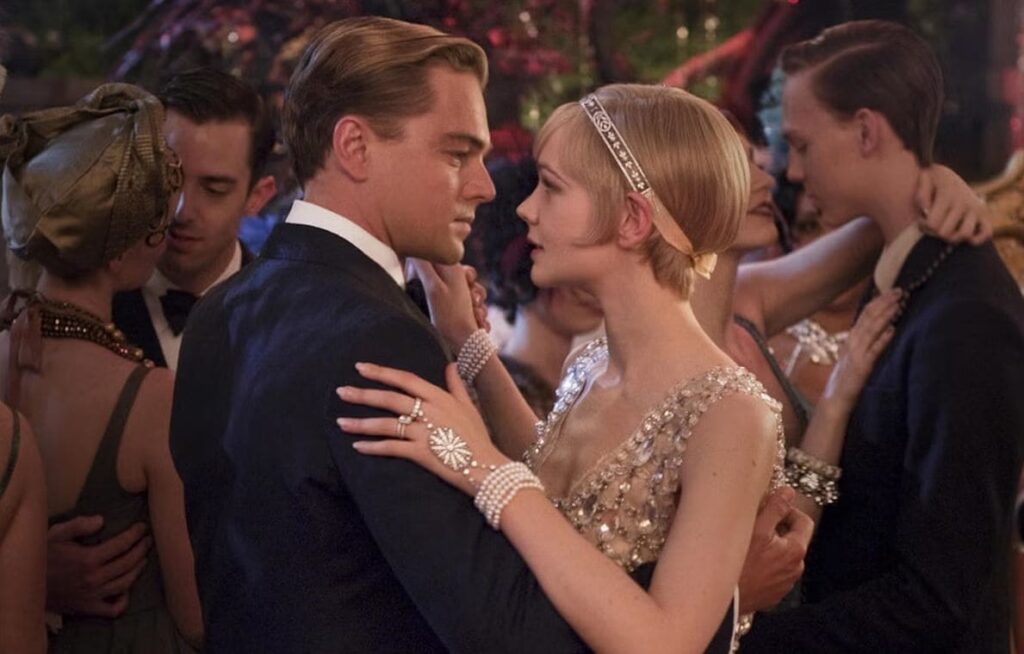Introduction
The novel “The Great Gatsby,” authored by Francis Scott Fitzgerald, portrays the pursuit of Daisy Buchanan by the character of Jay Gatsby. In particular, Fitzgerald’s novel depicts Gatsby’s pursuit of Daisy as primarily obsessive because he idealizes the woman and is deluded and extremely focused on her.
Idealization
Gatsby’s pursuit of Daisy is characterized as obsessive because he idealizes her. In the novel, Gatsby perceives Daisy’s voice as “full of money.”1 Consequently, this aspect of glamorizing Daisy portrays Gatsby’s perception of her voice as perfect. People who are excessively obsessed with someone feel a constant crippling urge to think about, idealize, and connect to that person.2 Gatsby is overly obsessed with Daisy, which makes him glamourize her voice. Therefore, Gatsby has an obsessive attachment to Daisy, which is justified by his idealized perception of her voice as one that means money.
1. Francis S. Fitzgerald, The Great Gatsby, (New York: Charles Scribner’s Sons, 1925), 128, https://www.planetebook.com/free-ebooks/the-great-gatsby.pdf.
2. Brandy E. Wyant, “Treatment of Limerence Using a Cognitive Behavioral Approach: A Case Study,” Journal of Patient Experience 8 (2021): 4, https://doi.org/10.1177/23743735211060812.

Delusion
Gatsby’s pursuit of Daisy is portrayed as obsessive because of his delusion about Daisy. According to the novel, Gatsby believes that Daisy loves him even though she is married to Tom.3 In this context, Gatsby’s belief in Daisy is deluded because she is married to Tom instead of him. Furthermore, the person with erotomania, a delusional disease, thinks that another individual is in love with him.4 Under these circumstances, Gatsby’s pursuit of Daisy is motivated by erotomania. For those interested in problem solutions essay, Gatsby’s delusion provides a literary case study of mental health issues impacting behavior. Thus, Gatsby is obsessed with pursuing Daisy because of erotomania, which makes him believe that Daisy is in love with him.
3. Fitzgerald, The Great Gatsby, 139.
4. Maria Teresa Valadas Tavares Rodrigues Tomaz and Lucilia Eduarda Abrantes Bravo, “De Clérambault’s Syndrome Revisited: A Case Report of Erotomania in a Male,” BMC Psychiatry 20, no. 1 (2020): 2, https://doi.org/10.1186/s12888-020-02921-5.
Extreme Fixation
Gatsby’s pursuit of Daisy is depicted as obsessive because of his extreme focus on her. For instance, Gatsby replies to Nick, “I want to wait here till Daisy goes to bed,” when Nick suggests that he should go to bed.5 In this situation, Gatsby portrays an extreme level of interest in Daisy. Moreover, this fixation is described as an obsession with a subject or cause pursued to an absurd degree.6 Gatsby’s act of waiting for Daisy to go to bed before he does is absurd. Hence, Gatsby is obsessed with pursuing Daisy because he does it extremely by waiting for her to go to bed before he goes to sleep.
5. Fitzgerald, 156.
6. Felicity J. Riddle et al., “Towards a National Strategy for Managing Fixated Persons in Australia.” Psychiatry, Psychology and Law 26, no. 3 (2019): 457, https://doi.org/10.1080/13218719.2018.1506722.
Conclusion
Gatsby’s pursuit of Daisy is primarily obsessive because it is based on idealization, delusion, and extreme fixation. Firstly, Gatsby idealizes Daisy because he perceives her voice as perfect by describing it as full of money. Secondly, Gatsby’s pursuit of Daisy is motivated by a delusion that she is in love with him. Finally, Gatsby pursues Daisy in an extremely fixated manner by not going to sleep until she does.
Bibliography
Fitzgerald, Francis S. The Great Gatsby. New York: Charles Scribner’s Sons, 1925. https://www.planetebook.com/free-ebooks/the-great-gatsby.pdf.
Riddle, Felicity J., Matthew Ferriman, David G. Farmer, and Kym M. Baillie. “Towards a National Strategy for Managing Fixated Persons in Australia.” Psychiatry, Psychology, and Law 26, no. 3 (2019): 457-467. https://doi.org/10.1080/13218719.2018.1506722
Valadas, Maria Teresa Tavares Rodrigues Tomaz, and Lucilia Eduarda Abrantes Bravo. “De Clérambault’s Syndrome Revisited: A Case Report of Erotomania in a Male.” BMC Psychiatry 20, no. 1 (2020): 1-7. https://doi.org/10.1186/s12888-020-02921-5
Wyant, Brandy E. “Treatment of Limerence Using a Cognitive Behavioral Approach: A Case Study.” Journal of Patient Experience 8, (2021): 1-7. https://doi.org/10.1177/23743735211060812


